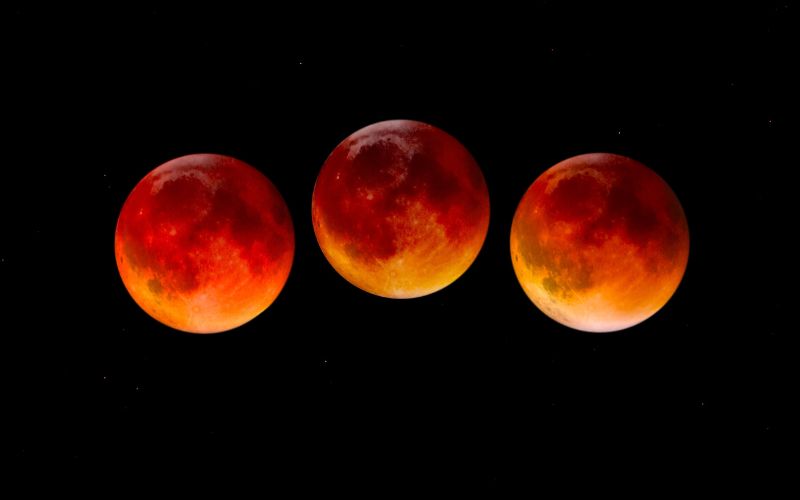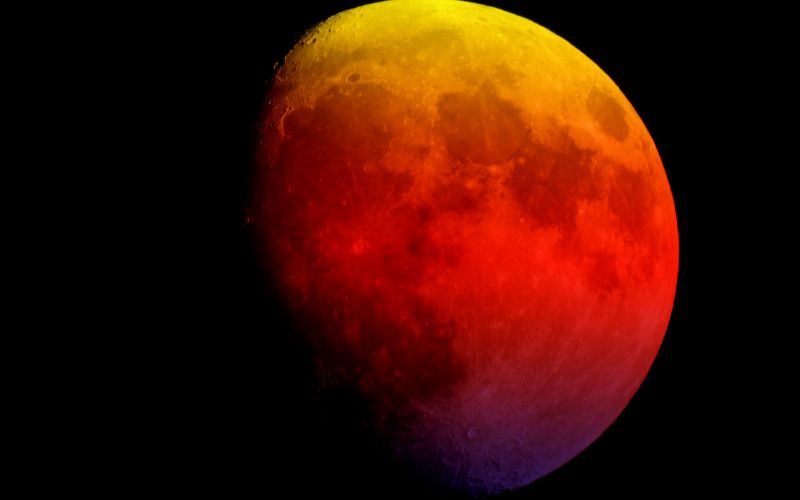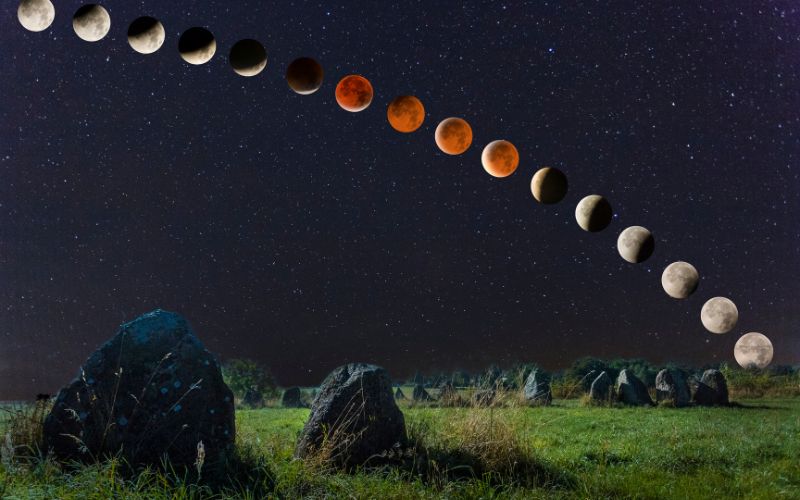A super blood moon eclipse, or lunar eclipse, is a fascinating celestial event that occurs only once a decade. Join us as we delve into this extraordinary phenomenon in the article below.
1 What is a Super Blood Moon Eclipse?
 A super blood moon eclipse occurs due to the combination of two celestial events
A super blood moon eclipse occurs due to the combination of two celestial events
A super blood moon eclipse is a phenomenon that occurs due to the combination of two celestial events: a super blood moon and a total lunar eclipse. During this event, the moon appears reddish, earning it the nickname “blood moon.”
When a total lunar eclipse occurs, and the moon is at or near its closest point to Earth (called the perigee), it is known as a super blood moon.
For further reading:
2 When does a Super Blood Moon Eclipse Occur?
 The super blood moon eclipse is a rare event that occurs only once every ten years.
The super blood moon eclipse is a rare event that occurs only once every ten years.
The super blood moon eclipse is a rare phenomenon that occurs only once every ten years.
According to scientific research, the moon orbits the Earth in an elliptical path. Each month, the moon passes through two points: perigee (closest to Earth) and apogee (farthest from Earth). When the moon is at its closest point to Earth, it is known as a “supermoon,” appearing larger and brighter than usual.
When a supermoon coincides with a total lunar eclipse, we witness the super blood moon eclipse or supermoon blood moon.
The most recent super blood moon occurred on May 26, 2021, and the next one is expected on October 8, 2033.
For further reading:
3 How does a Super Blood Moon Eclipse Affect the Earth?
 The supermoon phenomenon increases the Moon’s gravitational pull on the Earth.
The supermoon phenomenon increases the Moon’s gravitational pull on the Earth.
The supermoon phenomenon increases the Moon’s gravitational pull on the Earth, resulting in higher-than-usual tides. Preliminary calculations show a 23% increase in gravitational force during a supermoon compared to an average day. Specifically, for an 80-kilogram person, there would be an increase or decrease of 73 mg/weight, which is negligible for the human body.
In other words, the impact of a super blood moon eclipse on the Earth is minimal.
4 How to Safely View a Super Blood Moon Eclipse
 Tips for safely viewing the super blood moon eclipse
Tips for safely viewing the super blood moon eclipse
Unlike solar eclipses, which require special viewing equipment such as sunglasses or X-ray films, a total lunar eclipse or blood moon can be safely observed with the naked eye.
This is because the light from the blood moon is sunlight refracted at the edge of the Earth and not direct sunlight. Binoculars or telescopes can be used to get a clearer view of this phenomenon.
5 Beautiful Images of the Super Blood Moon Eclipse
 The blood moon is a fascinating celestial event.
The blood moon is a fascinating celestial event.
 Capturing the moment of the super blood moon in the night sky.
Capturing the moment of the super blood moon in the night sky.
 A view of the “super blood moon” in Shanghai, China.
A view of the “super blood moon” in Shanghai, China.
 The “super blood moon” peeking behind the temple of the sea god Poseidon in Greece.
The “super blood moon” peeking behind the temple of the sea god Poseidon in Greece.
 A stunning image of the super blood moon looking large and bright.
A stunning image of the super blood moon looking large and bright.
The above information summarizes the super blood moon eclipse phenomenon. We hope this article has provided you with valuable insights into this once-in-a-lifetime celestial event!
Don’t forget to purchase masks from us to stay safe while witnessing this fascinating celestial event:
What is a Total Lunar Eclipse? When Does it Happen?
A total lunar eclipse occurs when the Moon moves entirely into the Earth’s dark shadow. The upcoming total lunar eclipse, on November 8, 2022, will be a spectacular celestial event, visible to skygazers across the globe. This phenomenon, where the Moon turns a reddish hue, is a result of the Earth blocking sunlight from reaching the Moon. It’s a captivating sight, and one that has inspired curiosity and wonder throughout human history.
What is a Lunar Eclipse? When Does a Lunar Eclipse Occur?
A lunar eclipse is a captivating astronomical phenomenon that occurs when the Moon passes through the Earth’s umbra region. The upcoming lunar eclipse, occurring on November 8, 2022, will be a spectacular sight to behold. This celestial event, where the Moon slips into the Earth’s shadow, offers a unique opportunity to witness the interplay of light and darkness in our solar system.



































